10 Types of Ticks in California (With Pictures)
-
Elizabeth Gray
- Last updated:
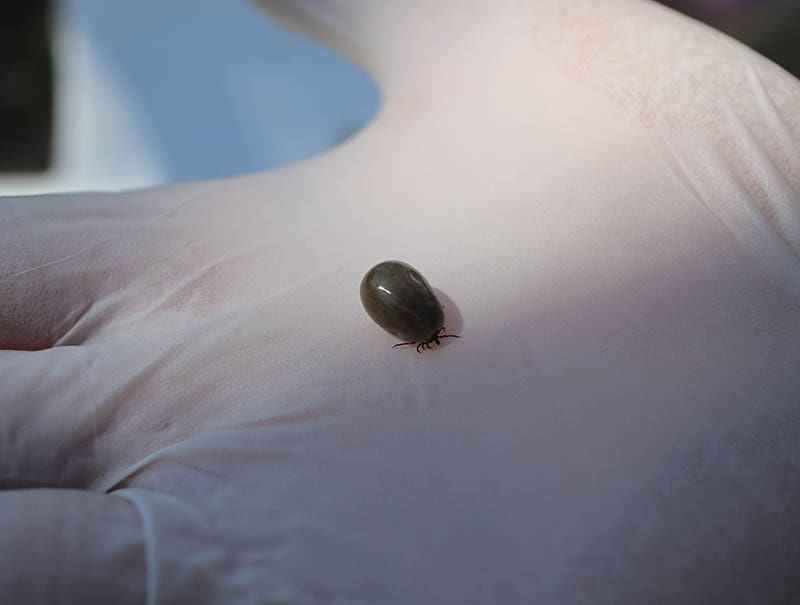
Finding a tick attached to your body after a peaceful walk through the California woods can quickly undo all the self-care you built up from your time in nature! Not only do you have to detach the hungry and potentially bloated tick safely, but you’re also left wondering whether the unwanted parasite left behind any diseases. Identifying the tick species is vital to help you determine potential health risks. Here are 10 types of ticks in California and the health threats associated with them.
The 10 Types of Ticks in California
1. American Dog Tick
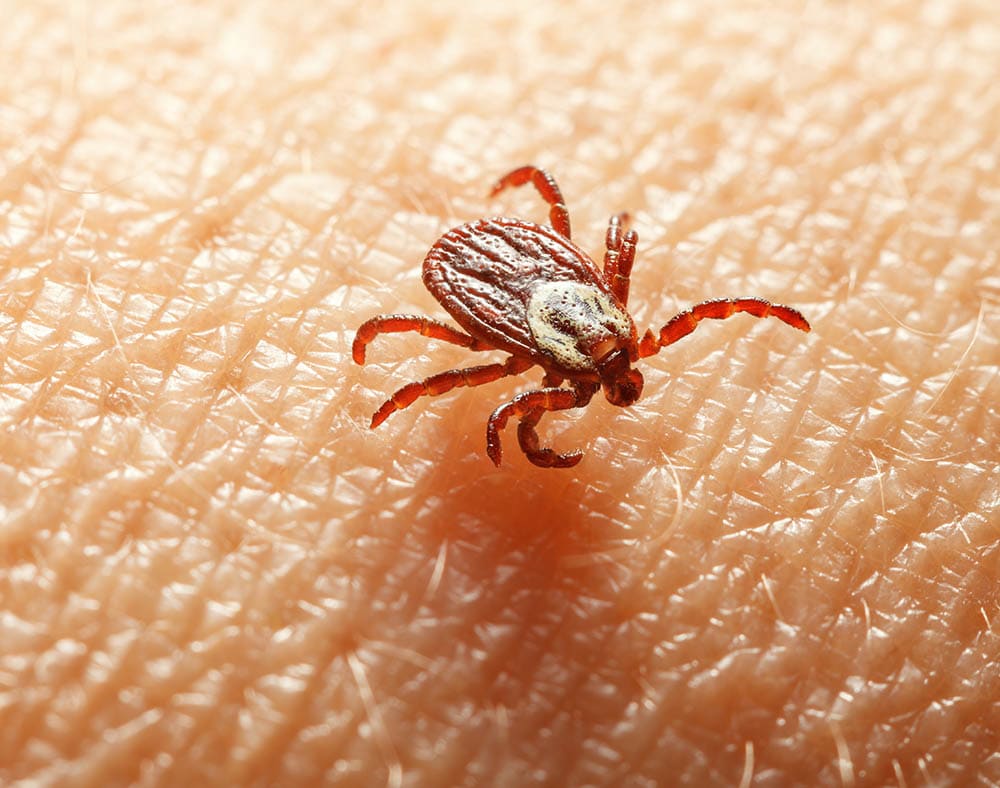
| Scientific name: | Dermacentor variabilis |
| Health risks: | Rocky Mountain spotted fever, tularemia, tick paralysis |
American dog ticks are one of the most common species in the United States. In California, they are mainly found along the coast, the Central Valley, and the eastern side of the Sierra Nevada range. These ticks have a red or red and cream body, with a cream patch behind their heads.
American dog ticks feed on different hosts depending on where they are in their life cycle. Young ticks prey on rabbits and rodents, while adults prefer large mammals, including humans. American dog ticks are the primary species responsible for spreading Rocky Mountain spotted fever and also carry another bacterial disease, tularemia. Tick paralysis is another possible danger posed by this species.
2. Rocky Mountain Wood Tick

| Scientific name: | Dermacentor andersoni |
| Health risks: | Rocky Mountain spotted fever, tularemia, Colorado tick fever, anaplasmosis, tick paralysis |
The Rocky Mountain wood tick lives primarily in the northwestern U.S. and Canada. Within California, they are confined to the northeastern part of the state. California residents are unlikely to encounter the ticks because they live in lightly populated areas.
Immature Rocky Mountain wood ticks feed on rodents, while adults prey on large mammals, including dogs, humans, and livestock. This species may cause tick paralysis when feeding on its large prey, along with spreading several dangerous diseases. Rocky Mountain wood ticks have reddish bodies. Males sport gray and white spots, while females have a single white patch behind their heads.
3. Brown Dog Tick
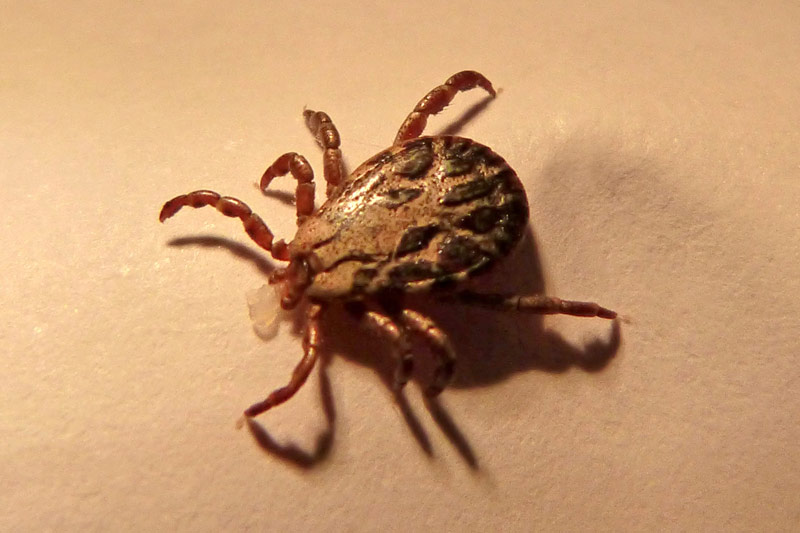
| Scientific name: | Rhipicephalus sanguineus |
| Health risks: | Rocky Mountain spotted fever, canine ehrlichia, canine babesia |
Brown dog ticks rarely bite humans but are a menace to the canine population of California. They are also known as “kennel ticks” because they commonly live near dogs. Brown dog ticks are one of the only species that lay eggs indoors and often spend their entire life cycle there.
In California, these ticks are found anywhere there are dogs to feed on. The species feeds on dogs through all stages of growth. Brown dog ticks carry Rocky Mountain spotted fever, which can infect dogs and humans. They are also common hosts for two dog-specific tick diseases: ehrlichia and babesia.
4. Poultry Tick
| Scientific name: | Argus sanchezi |
| Health risks: | tick paralysis, anemia, fowl disease |
Poultry ticks are found in southern and central California. They lay eggs in wood crevices, such as those in chicken coops. This species preys only on chickens and turkeys, spending their days hiding and nights feeding on the roosting birds.
Poultry ticks can spread bacteria that cause fowl disease. Other health risks include tick paralysis and anemia caused by excessive blood loss. Poultry ticks can live for years, even in empty wooden poultry housing. They are reddish, with lighter orange legs.
5. Spinose Ear Tick
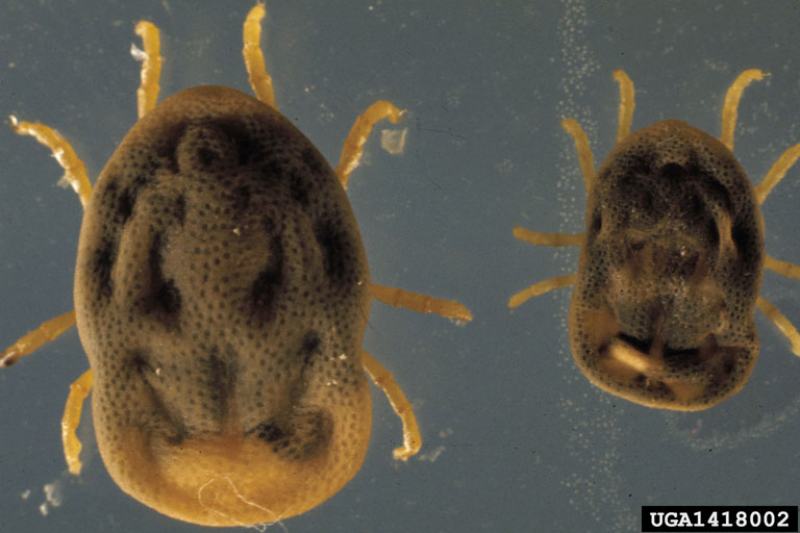
| Scientific name: | Octobius megnini |
| Health risks: | weight loss, hair loss, infection, irritation, allergies |
The spinose ear tick preys on livestock and horses in warm, dry climates. In California, it is found in the Central Valley and the southern part of the state. They’ve been known to feed on humans and pets but are primarily a threat to large farm animals.
Spinose ear ticks are soft-bodied, with gray or light brown coloring. Only immature life stages are parasitic, but they can feed on a host for as long as 200 days! This species is not known to transmit any diseases but can cause many other health problems, especially with dairy cattle.
Weight loss and decreased milk production are common issues. Allergies, ear irritation, hair loss, and infections at bite sites are also potential concerns.
6. Pajahuello Tick
| Scientific name: | Ornithodorus coriaceus |
| Health risks: | swelling, infection, pregnancy loss in cattle |
Pajahuello ticks are brown-gray, soft-bodied parasites found in wooded areas. In California, the species is found primarily in the foothills of the Sierra Nevada range, living among dead leaves on the forest floors. The ticks feed on large mammals like deer and cattle.
They carry dangerous bacteria that can cause pregnancy loss or weak calves if it infects pregnant cows. Pajahuello ticks will bite humans if given a chance and often encounter hikers in their habitat. When they bite, they release a toxic substance that causes a painful reaction in humans. Swelling, rashes, and infected sores commonly occur after a Pajahuello tick bite.
7. Winter Tick
| Scientific name: | Dermacentor albipictus |
| Health risks: | weight loss, anemia, hair loss |
Also called the moose tick, the winter tick feeds mainly on large, hooved mammals such as deer, horses, and moose. The winter tick is a widespread parasite and may be found anywhere in California. Most live along the central coast and in the lower Sierra foothills.
They typically feed on the same host throughout their life cycle, detaching to molt and then reattaching until it’s time to drop off and lay eggs. Female winter ticks are reddish-brown with a white patch on their backs. Males are dark brown with a lighter crisscross pattern across their bodies. These ticks don’t carry any known diseases but can cause significant health issues for their hosts, including weight loss, blood loss, irritation, and hair loss.
8. Pacific Coast Tick
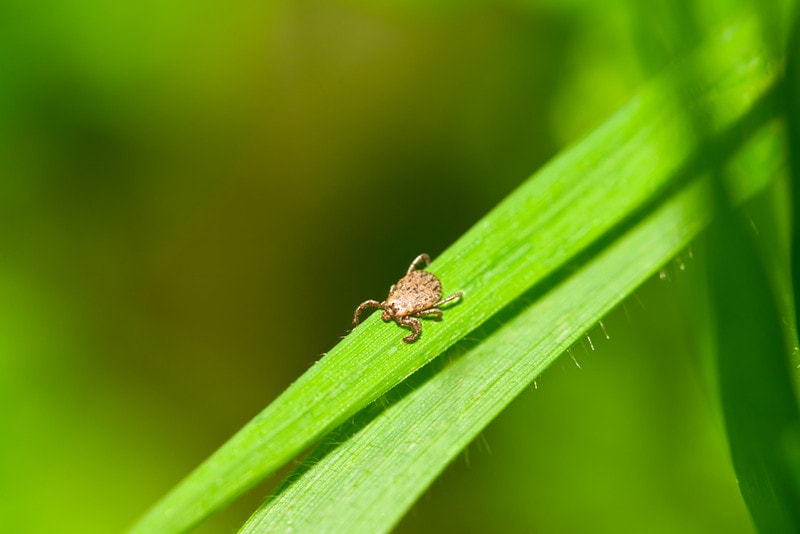
| Scientific name: | Dermacentor occidentalis |
| Health risks: | tick paralysis, Rocky Mountain spotted fever, tularemia, rickettsiosis, anaplasmosis |
This is one of the most widely distributed tick species in California. They live all over the state except in the driest parts of the southeastern deserts and Central Valley. Pacific Coast ticks feed on rodents in their immature life phase and on large mammals, including humans, as adults.
They live in fields and open woods, giving them many chances to encounter humans. Males are reddish-brown with dark brown speckles. Females are reddish-brown and black, with black-and-white patches just behind their heads. Pacific Coast ticks carry numerous diseases and may also cause tick paralysis in cows, deer, and ponies.
9. Western Black-legged Tick
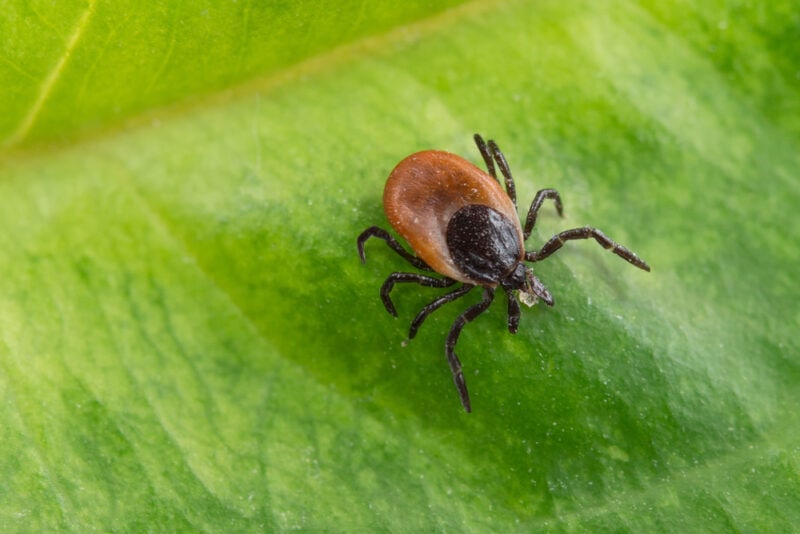
| Scientific name: | Ixodes pacificus |
| Health risks: | Lyme disease, equine ehrlichia, babesia, anaplasmosis, powassan virus, inflammation |
Also called Western deer ticks, the Western black-legged ticks are native to the Western United States. In California, the tick inhabits the wetter coastal regions and mountain foothills. Forests and shrublands are their typical habitat.
Male Western black-legged ticks are brownish-black and typically aren’t responsible for passing on any diseases. Females are also brown and black on their backs, with orange-brown undersides.
The female Western black-legged ticks also have more prominent jaws than males, which makes sense because they’re also the usual suspects when spreading disease. Immature ticks feed on rodents and lizards, while adults prey on dogs, deer, horses, and humans. These ticks cause serious rashes and inflammation around the area of the bite.
10. Rabbit Tick
| Scientific name: | Haemaphysalis leporispalustris |
| Health risks: | Rocky Mountain spotted fever, tularemia |
Rabbit ticks are found in California’s forest habitats. They don’t commonly prey on humans and aren’t considered a serious threat to human health, even though they carry both Rocky Mountain spotted fever and tularemia.
Adult rabbit ticks feed primarily on, yes, rabbits. Immature ticks prey on small rodents and ground birds such as the grouse. Because of this, they’re also known as grouse ticks. Both males and females are tan to reddish-tan, but females are larger and slightly darker.
Final Thoughts
Before heading out for a hike or a day at the park, protect yourself and your dog from ticks by keeping your furry friend up-to-date on parasite prevention and using repellent on yourself.
Tucking your pants into your socks is another trick that can keep ticks from gaining access to your skin. Check yourself and your pet carefully for ticks once you get home. If you did pick up any unwanted guests, you might still be able to catch them before they attach and start feeding.
Featured Image Credit: JuroX, Shutterstock
Contents
